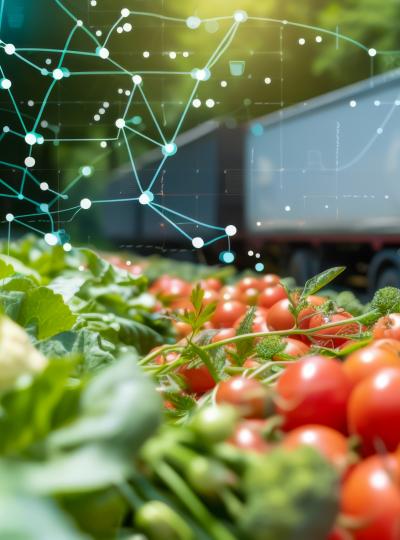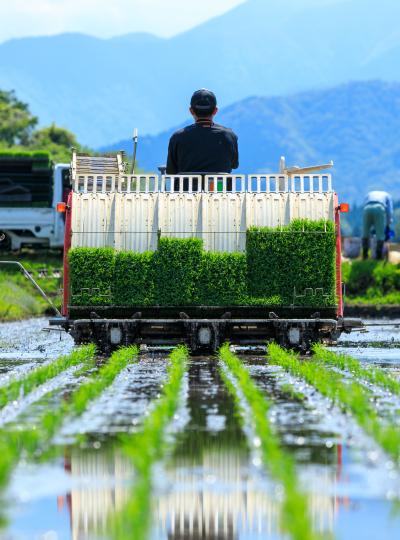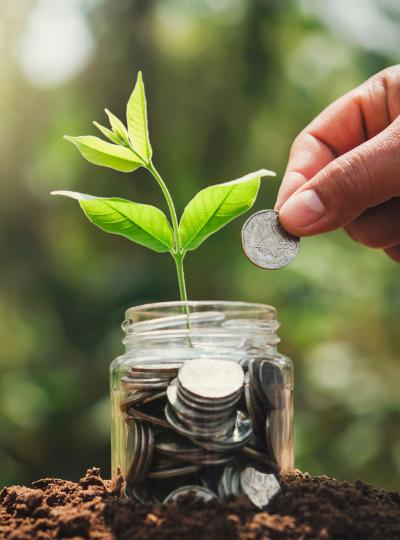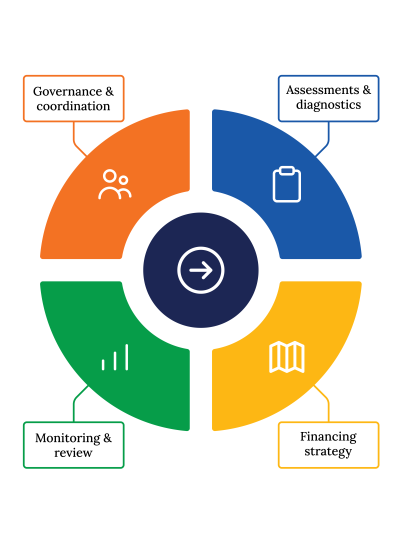Agritech and Precision Agriculture
Business Model Description
Implement precision farming techniques using sensors, data analytics, and automated systems to optimize resource use (water, fertilizers, pesticides) and increase crop yields for smallholder farmers. This includes providing comprehensive training and technical support to ensure effective adoption of these technologies.
Expected Impact
Integrating advanced technologies can significantly enhance productivity, reduce waste, and improve resource management.
How is this information gathered?
Investment opportunities with potential to contribute to sustainable development are based on country-level SDG Investor Maps.
Disclaimer
UNDP, the Private Finance for the SDGs, and their affiliates (collectively “UNDP”) do not seek or solicit investment for programmes, projects, or opportunities described on this site (collectively “Programmes”) or any other Programmes, and nothing on this page should constitute a solicitation for investment. The actors listed on this site are not partners of UNDP, and their inclusion should not be construed as an endorsement or recommendation by UNDP for any relationship or investment.
The descriptions on this page are provided for informational purposes only. Only companies and enterprises that appear under the case study tab have been validated and vetted through UNDP programmes such as the Growth Stage Impact Ventures (GSIV), Business Call to Action (BCtA), or through other UN agencies. Even then, under no circumstances should their appearance on this website be construed as an endorsement for any relationship or investment. UNDP assumes no liability for investment losses directly or indirectly resulting from recommendations made, implied, or inferred by its research. Likewise, UNDP assumes no claim to investment gains directly or indirectly resulting from trading profits, investment management, or advisory fees obtained by following investment recommendations made, implied, or inferred by its research.
Investment involves risk, and all investments should be made with the supervision of a professional investment manager or advisor. The materials on the website are not an offer to sell or a solicitation of an offer to buy any investment, security, or commodity, nor shall any security be offered or sold to any person, in any jurisdiction in which such offer would be unlawful under the securities laws of such jurisdiction.
Country & Regions
Sector Classification
Pipeline Opportunity
Agritech and Precision Agriculture
Implement precision farming techniques using sensors, data analytics, and automated systems to optimize resource use (water, fertilizers, pesticides) and increase crop yields for smallholder farmers. This includes providing comprehensive training and technical support to ensure effective adoption of these technologies.
Business Case
Market Size and Environment
USD 100 million - USD 1 billion
15% - 20%
Number of agritech-enabled farms – agritech solutions (IoT, AI, drones) are adopted.
Indicative Return
> 25%
Ticket Size
USD 1 million - USD 10 million
Market Risks & Scale Obstacles
Capital - CapEx Intensive
Impact Case
Directly impacted stakeholders
People
Indirectly impacted stakeholders
People
Impact Classification
What
Improved agricultural productivity and sustainability through technology adoption (e.g., drones, precision irrigation) enhance food security and reduce environmental degradation
Who
Small-scale farmers, women farmers, and rural communities benefit from increased access to modern technologies and market opportunities, improving livelihoods and economic empowerment
Risk
Climate-related shocks, pest infestations, and economic volatility pose significant risks to agricultural stability and sustainability, affecting both farmers and the environment
How Much
Increase agricultural output significantly by 2030, with a focus on reducing reliance on imports by at least 30% and enhancing domestic food production to meet 70% of consumption needs
Impact Thesis
Integrating advanced technologies can significantly enhance productivity, reduce waste, and improve resource management.
Enabling Environment
Marketplace Participants
Government
Target Locations
References
- (1. RADA Drone Initiative: Utilizes drones with multispectral cameras 2. Jamaica 4-H Clubs: Pilots precision agriculture systems through the "Grow Smart, Eat Smart" 3. Langston University Collaboration: Partners with RADA 4. Plentiful Harvest Farms – A Hydroponic Farm Investment in Jamaica















